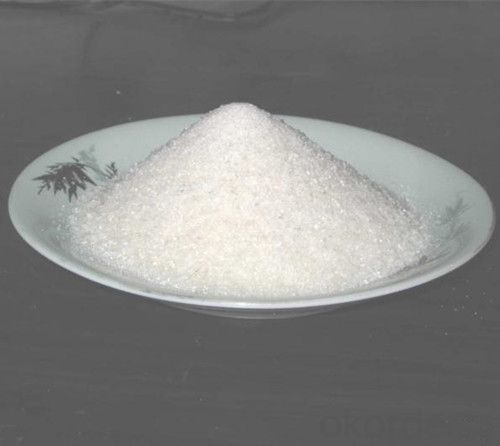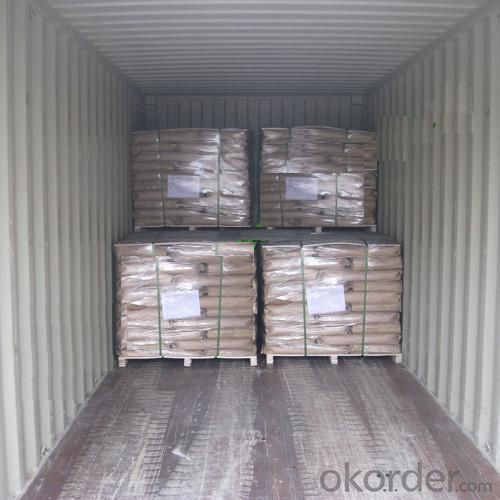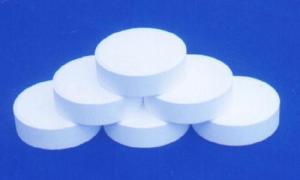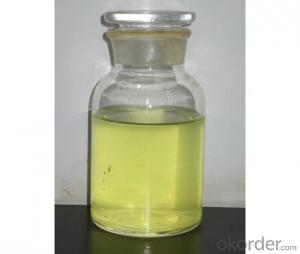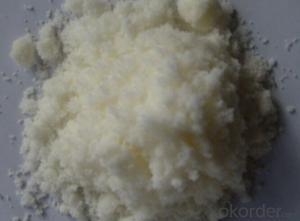Sodium Nitrite Industrial Grade Consturction Chemical
- Loading Port:
- China main port
- Payment Terms:
- TT OR LC
- Min Order Qty:
- 1000 kg
- Supply Capability:
- 500000 kg/month
OKorder Service Pledge
OKorder Financial Service
You Might Also Like
Industrial Sodium nitrite
Description:
Alias: Sodium nitrite,food grade
English Name: Sodium nitrite
CAS: 7632-00-0
EINECS: 231-555-9
Molecular formula: NaNO2
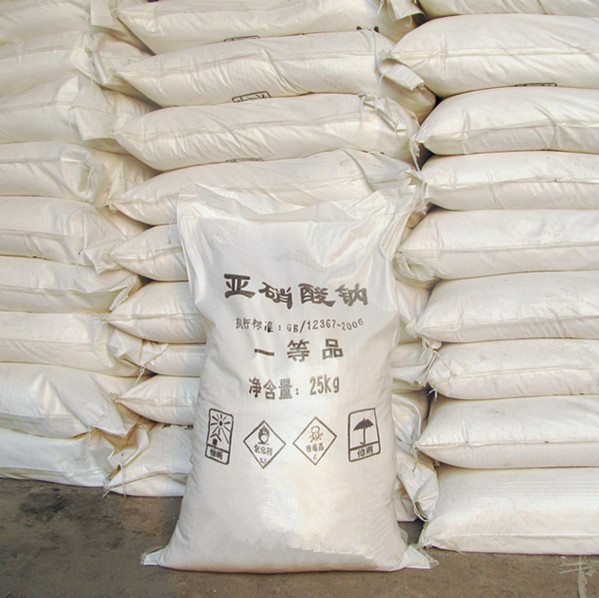
Performance:
Sodium nitrite is white or light yellow crystal, relative molecular weight is 69.0, specific gravity is 2.168, with no
smell, light saline taste, easy deliquesce. It has fine water-solubility and hygroscopicity. Its aqueous solution is with
alkalescence and PH range is 9. It is easily soluble in liquid ammonia, light soluble in alcohol, carbinol and diethyl ether.
Melting point is 271℃, decomposition temperature is 320℃. It has oxidability and reducibility.
Use:
it is used as metal heat treatment agent, plating inhibitor, steel corrosion inhibitor, bleacher, mordant, for the production
of dye intermediate, pigment, chemical analysis reagent, sterilization of instruments, colour former and preservative.
Index: GB/T2367-2006

main index | unit | high-class product | top quality product | qualified product | food grade |
Sodium nitrite | %≥ | 99.0 | 98.5 | 98.0 | 99.0 |
sodium nitrate | %≤ | 0.80 | 1.00 | 2.0 | - |
chloride | %≤ | 0.10 | 0.17 | - | 0.10 |
water insoluble | %≤ | 0.05 | 0.06 | 0.10 | 0.05 |
moisture | %≤ | 1.4 | 2.0 | 2.5 | 1.8 |
Packing
Plastic bag lined woven bag. Net wt.25/50kg.
FAQ
1.Q: What is MOQ?
A: Our MOQ is 1 TON.
2.Q: Could you offer free sample?
A: We can provide free samples to you for quality testing.
3.Q: What about your packing?
A: For liquid: Flexitank, or IBC tank 1000L
For powder:Woven fabric bag with plastic film liner( 25kg or 1000kg)
Clients’ packing is workable.
4.Q: How about your productive capacity?
A: 150000 tons/Year.
5.Q: What is your delivery time?
A: Within 7 days after received deposit or L/C at sight.
- Q: How does the catalyst affect chemical balance? Why the catalyst has no effect on the chemical equilibrium, for v-t diagram
- The mechanism of the catalyst is to affect the reaction activation energy in the reaction. The positive catalyst reduces the activation energy required for the reaction and increases the proportion of the activated molecules, thus reducing the reaction time.
- Q: describe a biological catalyst?
- A biological catalyst is the almighty enzyme. An enzyme takes the food that animals eat, yes including you, and breaks the raw stuff into more tangible byte sizes pieces for all the cells of a living organism. So essentially a catalysts is a mover of a biological system. Whole systems such as the apex predator the great bald eagle. I think the whole system catalyst are the decomposer organisms. The little crawlers like shredders and mushrooms. I hope that this helps
- Q: How does catalyst aid a chemical reaction?
- it makes the reaction go faster.
- Q: What is the catalyst for ethylene addition water? How to play a catalytic role.
- With dilute sulfuric acid can be. Sulfuric acid will be added with the addition of ethyl hydrogen sulfide, and then hydrolyzed into ethanol.
- Q: Comparison of biocatalysts with chemical catalysts!
- The same point: biocatalysts and chemical catalysts are selective (specific) and efficient; participate in each reaction, its own nature and quantity will not change.
- Q: How does active charcoal catalyze in some chemical reactions?
- It is a carrier, because its particles are small (micron level, nano-level), has a relatively large surface area, can be loaded on the catalyst to provide more reaction sites. Although called activated carbon, but its catalytic aspects of the relevant business reports.
- Q: Thorough explanation pls.
- by lowering the activation energy
- Q: In the chemical reaction will have to use the catalyst reaction, such as H2O2 === (MnO2) H2O + O2 ↑, then the catalyst in the end to participate in the reaction (that is, the catalyst itself is the reactant) If so, why are some of these substances in the reaction (these substances refer to the catalyst) in the reaction after the quality and nature of the change does not change?
- The definition of a chemical reaction rate in a chemical reaction can be changed (accelerated or slowed down) in a chemical reaction, and the quality and chemical properties of the substance itself are not catalyzed before and after the reaction (which will change during the reaction) Also known as catalyst. Its physical properties may change, for example, MnO2 in the catalytic potassium chlorate to generate potassium chloride and oxygen before and after the reaction from the block into a powder. There is also a saying that the catalyst reacts first with one of the reactants and then the two products continue to undergo a new chemical reaction under the original conditions and the reaction conditions of the catalyst reaction product are more favorable than the reaction conditions of the original reactants Changed.
- Q: i keep messing up on those 2 simple things haha i would apprecaite some help.
- enzymes help biochemical reactions proceed at a faster rate than normal in a physiological system, catalysts or sometimes referred to as subunits, metals and other ligands, bind enzymes, and can have a positive and negative effect on the rate of a reaction. search them on wikipedia!
- Q: put in a way that a freshman in high school can understand please =)
- enzymes are a type of catalyst
Send your message to us
Sodium Nitrite Industrial Grade Consturction Chemical
- Loading Port:
- China main port
- Payment Terms:
- TT OR LC
- Min Order Qty:
- 1000 kg
- Supply Capability:
- 500000 kg/month
OKorder Service Pledge
OKorder Financial Service
Similar products
Hot products
Hot Searches
Related keywords



